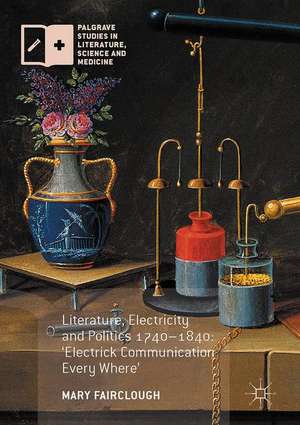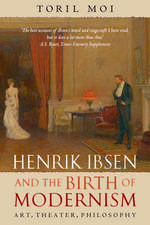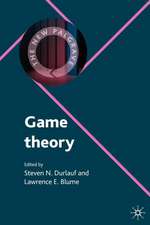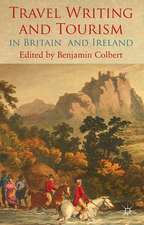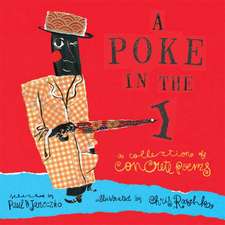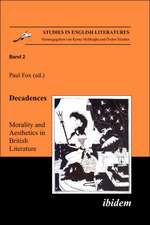Literature, Electricity and Politics 1740–1840: ‘Electrick Communication Every Where’: Palgrave Studies in Literature, Science and Medicine
Autor Mary Faircloughen Limba Engleză Hardback – apr 2017
| Toate formatele și edițiile | Preț | Express |
|---|---|---|
| Paperback (1) | 693.71 lei 6-8 săpt. | |
| Palgrave Macmillan UK – 12 iul 2018 | 693.71 lei 6-8 săpt. | |
| Hardback (1) | 699.12 lei 6-8 săpt. | |
| Palgrave Macmillan UK – apr 2017 | 699.12 lei 6-8 săpt. |
Din seria Palgrave Studies in Literature, Science and Medicine
- 20%
 Preț: 628.35 lei
Preț: 628.35 lei - 15%
 Preț: 521.26 lei
Preț: 521.26 lei - 18%
 Preț: 780.68 lei
Preț: 780.68 lei - 15%
 Preț: 700.10 lei
Preț: 700.10 lei - 15%
 Preț: 642.68 lei
Preț: 642.68 lei - 15%
 Preț: 588.37 lei
Preț: 588.37 lei - 15%
 Preț: 643.84 lei
Preț: 643.84 lei - 15%
 Preț: 698.80 lei
Preț: 698.80 lei - 15%
 Preț: 523.54 lei
Preț: 523.54 lei - 15%
 Preț: 499.12 lei
Preț: 499.12 lei - 15%
 Preț: 583.93 lei
Preț: 583.93 lei -
 Preț: 417.14 lei
Preț: 417.14 lei - 15%
 Preț: 691.91 lei
Preț: 691.91 lei - 15%
 Preț: 586.55 lei
Preț: 586.55 lei -
 Preț: 219.74 lei
Preț: 219.74 lei -
 Preț: 388.52 lei
Preț: 388.52 lei -
 Preț: 221.28 lei
Preț: 221.28 lei - 18%
 Preț: 783.98 lei
Preț: 783.98 lei -
 Preț: 389.11 lei
Preț: 389.11 lei - 18%
 Preț: 783.50 lei
Preț: 783.50 lei - 15%
 Preț: 527.15 lei
Preț: 527.15 lei - 15%
 Preț: 586.23 lei
Preț: 586.23 lei -
 Preț: 454.74 lei
Preț: 454.74 lei - 15%
 Preț: 582.95 lei
Preț: 582.95 lei - 15%
 Preț: 527.48 lei
Preț: 527.48 lei -
 Preț: 385.84 lei
Preț: 385.84 lei -
 Preț: 383.71 lei
Preț: 383.71 lei -
 Preț: 382.57 lei
Preț: 382.57 lei - 15%
 Preț: 501.55 lei
Preț: 501.55 lei - 15%
 Preț: 642.03 lei
Preț: 642.03 lei - 18%
 Preț: 737.43 lei
Preț: 737.43 lei - 18%
 Preț: 894.03 lei
Preț: 894.03 lei -
 Preț: 450.11 lei
Preț: 450.11 lei -
 Preț: 391.79 lei
Preț: 391.79 lei - 15%
 Preț: 640.55 lei
Preț: 640.55 lei - 15%
 Preț: 589.65 lei
Preț: 589.65 lei - 15%
 Preț: 499.59 lei
Preț: 499.59 lei
Preț: 699.12 lei
Preț vechi: 822.50 lei
-15% Nou
Puncte Express: 1049
Preț estimativ în valută:
133.79€ • 139.17$ • 110.45£
133.79€ • 139.17$ • 110.45£
Carte tipărită la comandă
Livrare economică 14-28 aprilie
Preluare comenzi: 021 569.72.76
Specificații
ISBN-13: 9781137593146
ISBN-10: 1137593148
Pagini: 264
Ilustrații: IX, 264 p. 2 illus.
Dimensiuni: 148 x 210 x 22 mm
Greutate: 0.48 kg
Ediția:1st ed. 2017
Editura: Palgrave Macmillan UK
Colecția Palgrave Macmillan
Seria Palgrave Studies in Literature, Science and Medicine
Locul publicării:London, United Kingdom
ISBN-10: 1137593148
Pagini: 264
Ilustrații: IX, 264 p. 2 illus.
Dimensiuni: 148 x 210 x 22 mm
Greutate: 0.48 kg
Ediția:1st ed. 2017
Editura: Palgrave Macmillan UK
Colecția Palgrave Macmillan
Seria Palgrave Studies in Literature, Science and Medicine
Locul publicării:London, United Kingdom
Cuprins
Introduction. Electricity, spectacle and figuration.- Chapter 1. Experiment, aether and the soul of the world.- Chapter 2. Electricital medicine, feeling and eroticism.- Chapter 3. Animal electricity, vitality, and revolution.- Chapter 4. Electrochemistry, matter and life.- Epilogue. Michael Faraday and a new electrical era.- Illustrations.- Bibliography.- Index.-
Recenzii
“This book is useful for those seeking to learn more about the personal, political, intellectual, and spiritual risks undertaken by those involved in the emergence of electrical discoveries and technologies. Literature, Electricity and Politics will interest scholars and students of the history and philosophy of science and intellectual history, as well as those eager to learn more about religious and political thought and the ideals of progress in the late eighteenth and early nineteenth centuries.” (Jessica Hamel-Akré, Eighteenth-Century Fiction, Vol. 31 (3), 2019)
Notă biografică
Mary Fairclough is a Lecturer in the department of English and Related Literature and the Centre for Eighteenth Century Studies at the University of York, UK. She is the author of The Romantic Crowd: Sympathy, Controversy and Print Culture (2013), and various articles on the intersection between literature, science and politics in the eighteenth century.
Textul de pe ultima copertă
This book investigates the science of electricity in the long eighteenth century and its textual life in literary and political writings. Electricity was celebrated as a symbol of enlightened progress, but its operation and its utility were unsettlingly obscure. As a result, debates about the nature of electricity dovetailed with discussions of the relation between body and soul, the nature of sexual attraction, the properties of revolutionary communication and the mysteries of vitality. This study explores the complex textual manifestations of electricity between 1740 and 1840, in which commentators describe it both as a material force and as a purely figurative one. The book analyses attempts by both elite and popular practitioners of electricity to elucidate the mysteries of electricity, and traces the figurative uses of electrical language in the works of writers including Mary Robinson, Edmund Burke, Erasmus Darwin, John Thelwall, Mary Shelley and Richard Carlile.
Caracteristici
Covers a broad historical period, but is also informed by close readings of textual and visual examples Takes an innovative approach, using the language of electricity to demonstrate the connections between philosophical, political and literary discourse in the period Takes an interdisciplinary approach, weaving together cultural histories of science, histories of political discourse, and formal literary analysis
